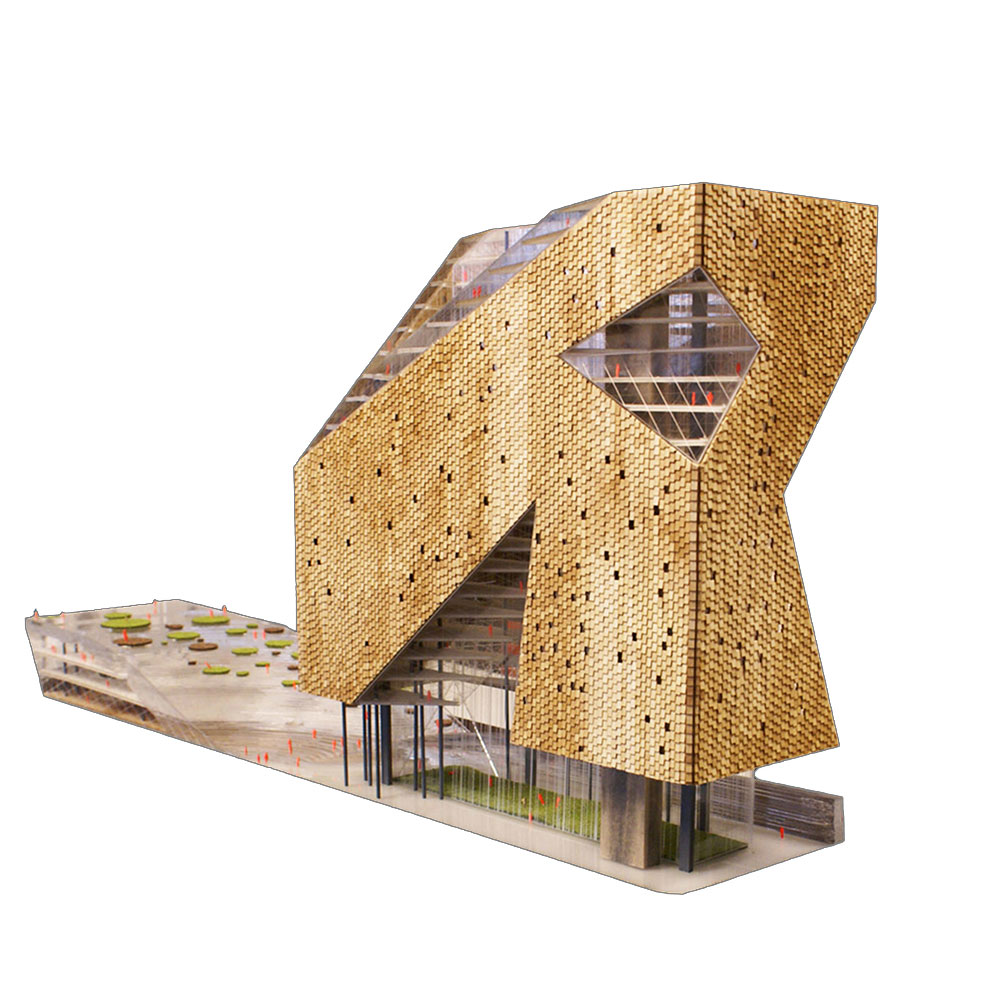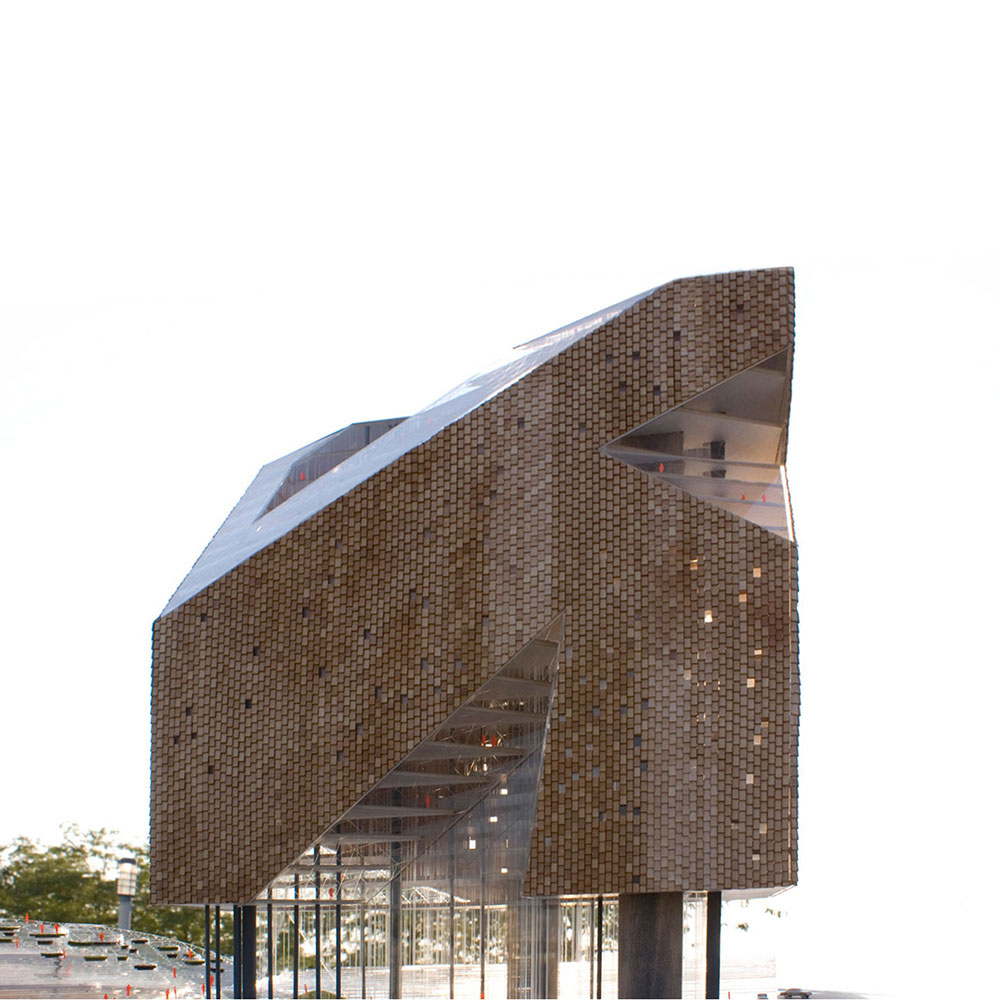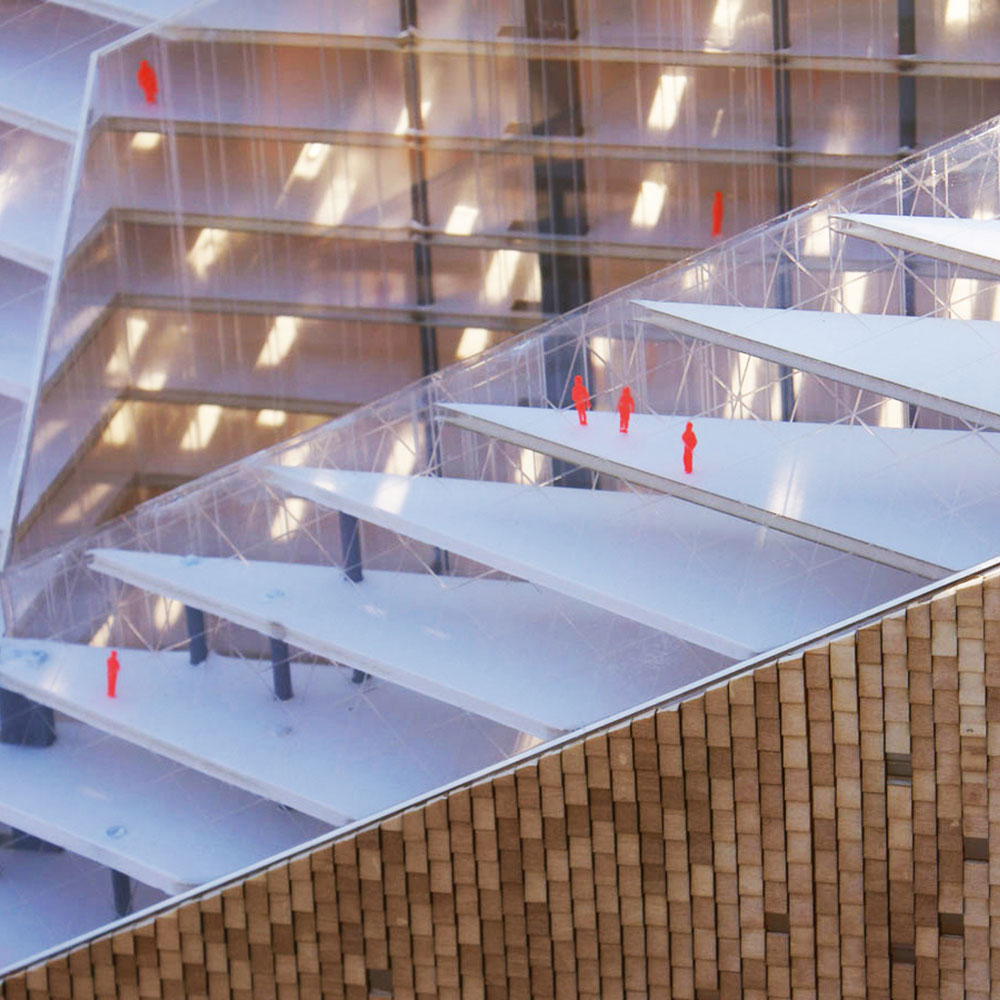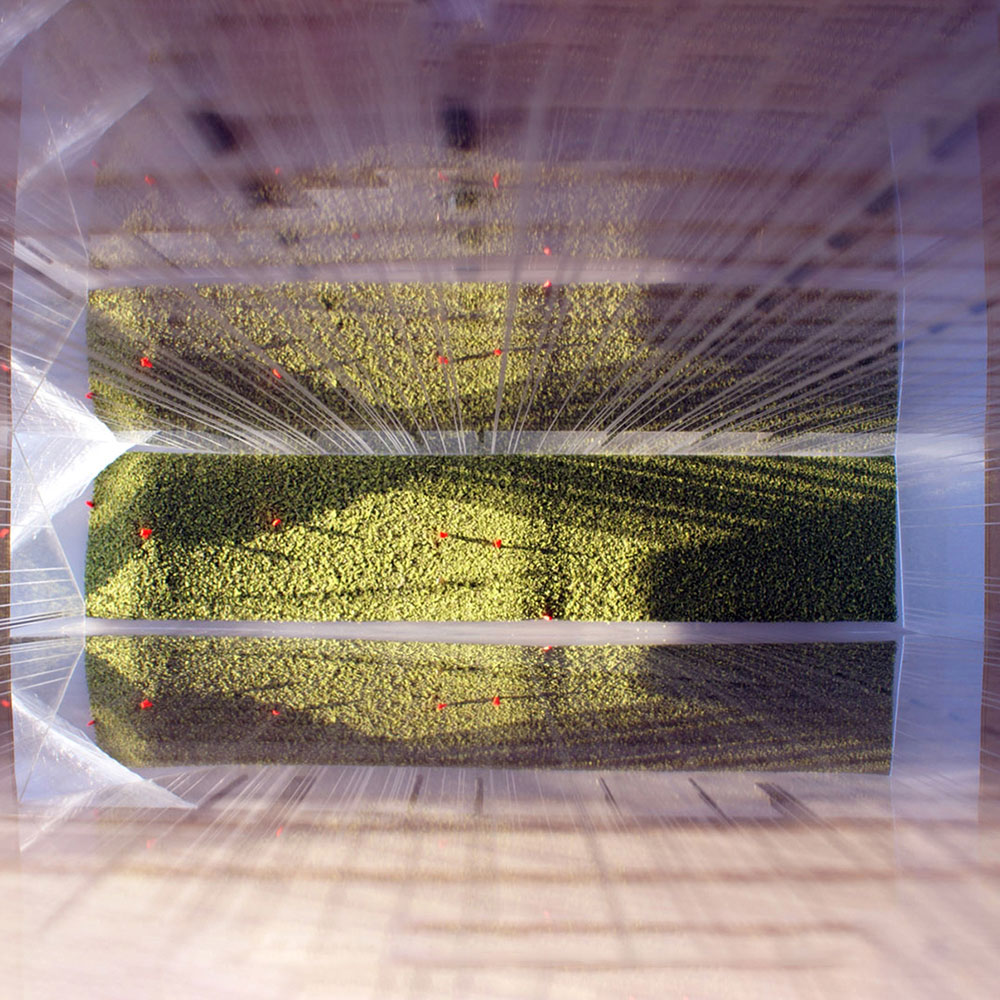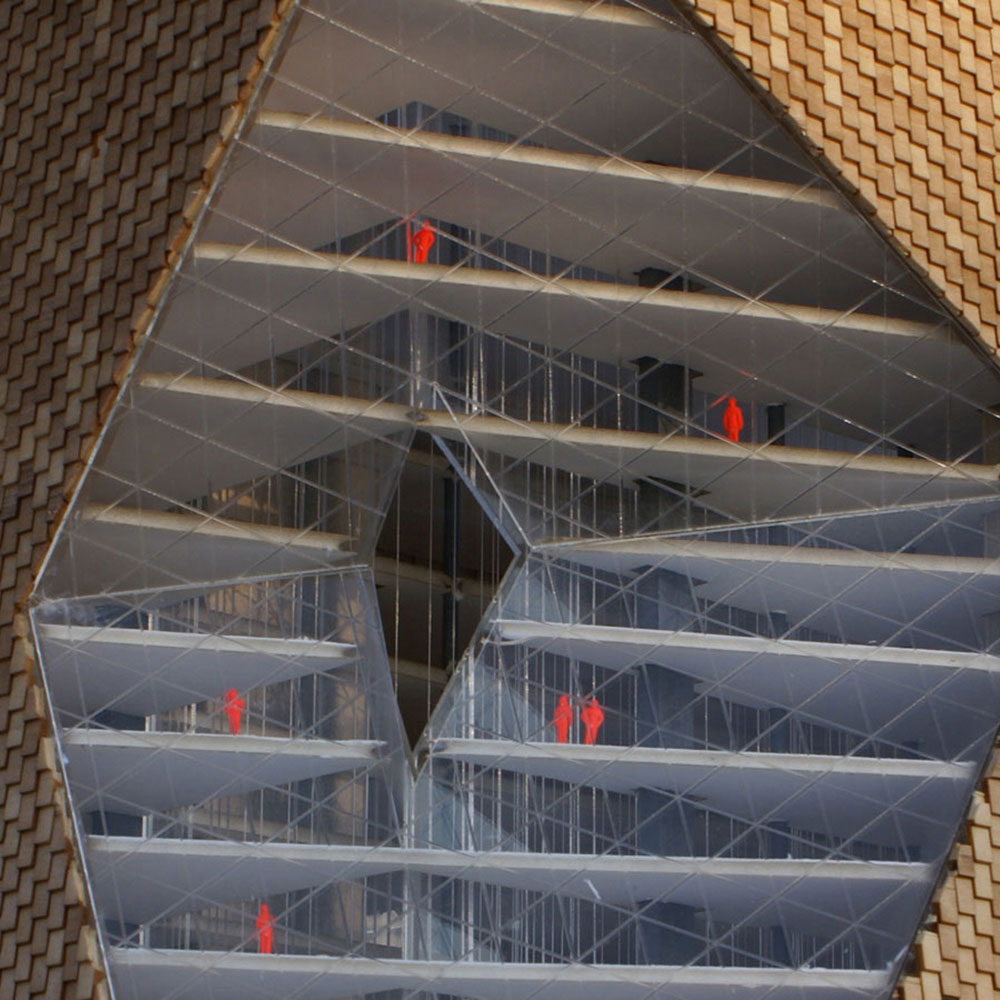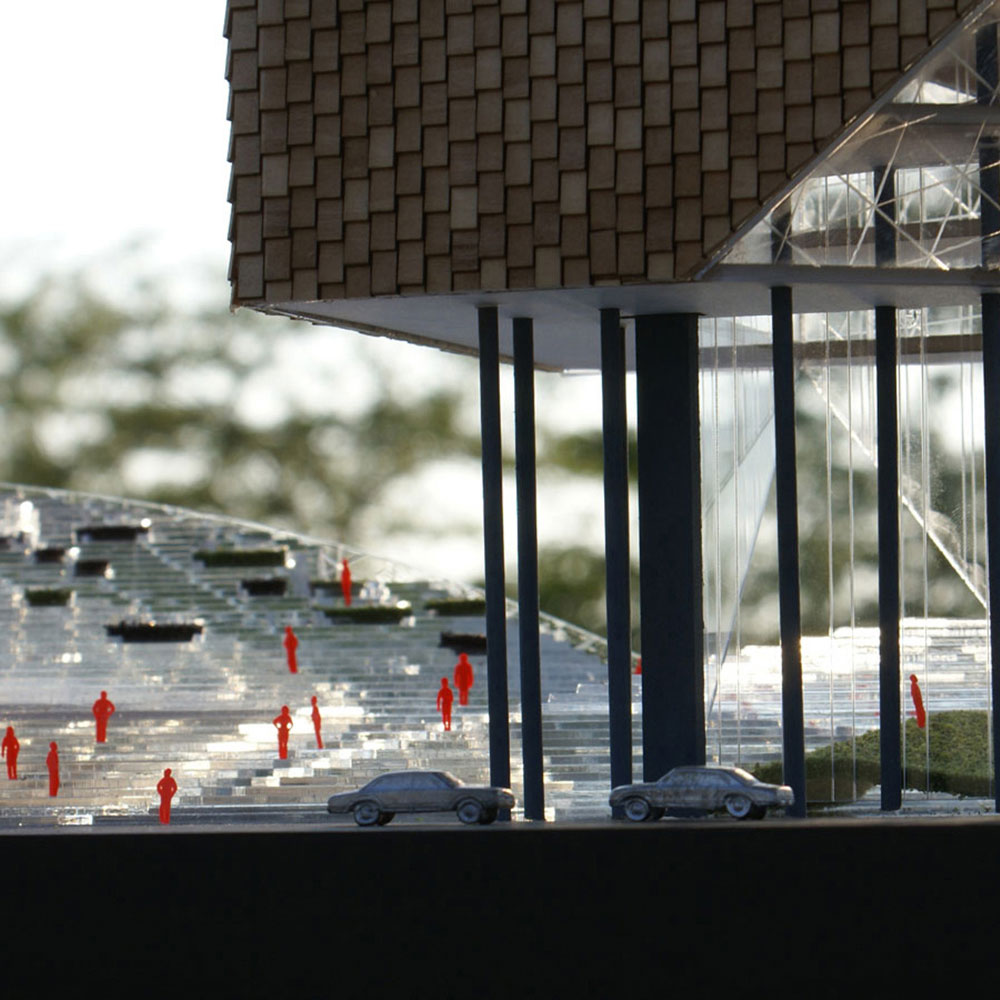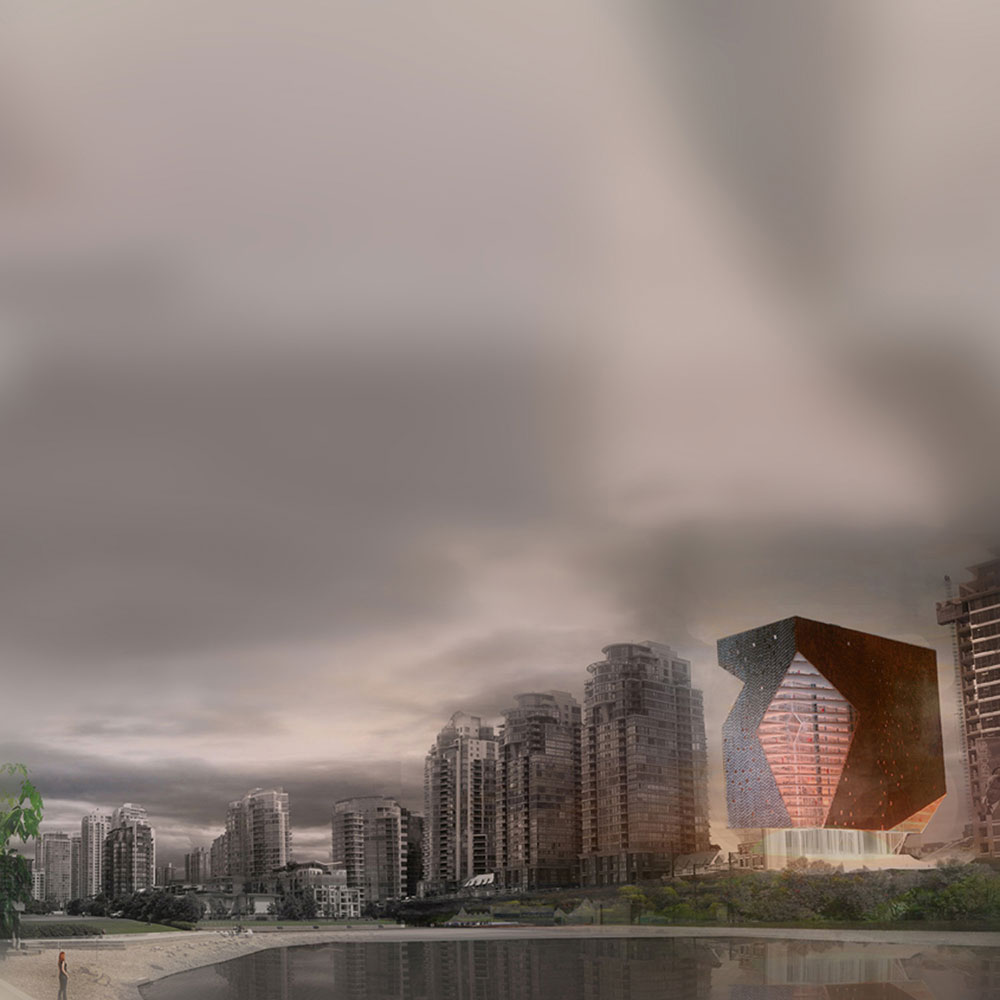OTO turns the existing podium-tower typology inside-out. While the individual architectural mediocrity of this typology may offer little to argue with, its collective homogeneity results in an architectural style too predictable to generate authentic urban evolution. A singularly carved mass, the OTO monotype reintroduces frenetic visual noise; it re-establishes architecture as a generator of possibility, makes physical wear an asset, and offers viable authenticity.
While the existing plinth vocabulary acts as an ordering device (through architectural complacency and rigidly drawn perimeters), we have instead designed a navigable block, alleviating the ground-plane of this formal encumbrance. The plinth becomes porous, providing space for collectivity, and leaving the architecture open to individual devices.
Through inversion, a courtyard volume becomes the entry to the building, leading to a natural space free of the noise and congestion beyond. Urban-scale wood shingles reinterpret cultural inheritance and provide a backdrop for the subtleties of northern light and shadow; while weathering becomes an attribute in the urban seas of nondescript, late-century construction, as shingles are replaced over time to then contribute to an evolving skyline. OTO ultimately revives cities’ foremost attributes as sites for novelty, misinterpretation, and re-appropriation.
Client: PoTo:Type Competition
Program: Commercial, Mixed Use, High Rise
Status: Complete
Size: 170,000 SF
Location: Vancouver, BC, Canada
Team:
Architects: Kyle May, Jonathan Kurtz, Dru McKeown, Kevin Stita
Awards: AIA Cleveland unbuilt work – Merit Award 2007
Images:
Kyle May, Jonathan Kurtz, Dru McKeown, Kevin Stitak
